This post contains affiliate links.
Whether it’s a birthday cake, wedding day cake, or cake from a bakery, everyone has run into the issue of having a leftover cake that turns hard and dry after a few days. Since texture and mouthfeel are key when it comes to cake, it’s no wonder why so many people decide to toss their cake after the first sign of drying out.
As a general rule, you can soften and moisten a dry cake by brushing a little milk or water over all the hard surfaces of the cake and placing it inside a preheated oven (around 350° Fahrenheit) for 20 minutes. The moisture will begin to absorb into the dry cake making it softer.
There are several ways that your cake can become dry. Whether it came out dry right after you baked it, or if you left it out for too long, cakes have a tendency to become dry and hard very quickly. Here are several ways I’ve used in order to salvage dry cake so you can keep enjoying it for as long as possible!
Why Do My Cakes Get Hard After Baking?
On average, cakes get hard and dense after baking because of overmixing the flour. Overmixing flour creates an overdevelopment of gluten in the mixture which makes it hard. Since cakes require batter that is light and fluffy, it is recommended to not mix cake flour more than necessary.
There are two usual culprits to a hard, dry cake. You’ve either overbaked it or you’ve overmixed your batter right from the beginning. Most of the time, it’s a combination of both.
The reason why a well-baked cake is so light and fluffy is due to the air bubbles that are produced in a lightly mixed batter. By mixing the ingredients just to the point where they are well combined, you are creating tiny little pockets of air that create the lightness that makes cakes so delicious.
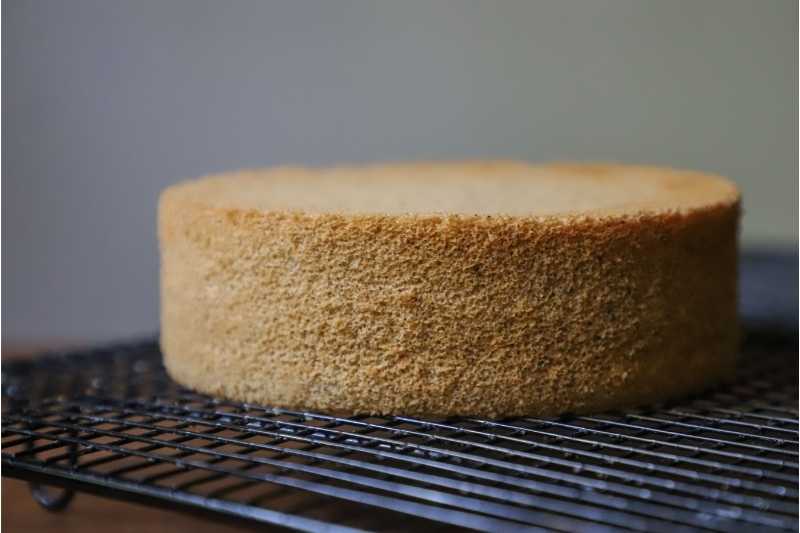
While I like to do my mixing by hand, I much rather prefer using a Stand Mixer instead. I recently wrote an article that talks about the 3 Best Stand Mixers that bakers can buy in each stage of their baking journey. After reviewing a few stand mixers, the Best Overall Mixer was the KitchenAid Artisan Tilt-Head Stand Mixer. You can check out this stand mixer on Amazon!
Another key rule is to make sure your ingredients are at room temperature before you start your mixing process.
Curdling can occur within your batter if you are using a combination of cold and warmer ingredients, so it’s important to let them sit out for about fifteen minutes to let them warm up.
Also, be sure to get familiar with your recipe before starting the mixing process. There’s nothing worse than having to stop in the middle of combining and mixing your ingredients to have to check a recipe. This could lead to the mixture settling, or you losing track of how much you’ve mixed it.
It’s always a good idea to read your recipe over a few times before starting!
The other issue many home bakers run into is overbaking their products. The process of baking a cake isn’t difficult, it’s getting the timing right and pulling it out of the oven before it overcooks that’s the tricky part.
While you may be concerned about undercooking your cake, you don’t want to overcook it either. Leaving your cake in the oven a few minutes longer than necessary will leave you with a dry cake that’s barely edible.
*Side Note: You might also want to know Why Your Muffins Crack On Top after they’re baked. I recently wrote an article that talks about How To Fix and Prevent Dry Muffins, you can check it out here!
A general rule I like to use is to check it about a minute or two before it’s done. If it looks about done then take it out and let it rest for a minute. You can always stick it back in if it needs a little more time, but you can’t turn back time on an overcooked cake!
How to Soften & Moisten Cake That Has Gone Hard in the Fridge?
To moisten a cake that’s gone hard, put a wet paper towel on top of the cake and place the cake in the microwave for 10 seconds. The liquid in the paper towel will evaporate and create a steam bath for the hard cake to absorb and become softer. Repeat the process as necessary for a softer cake.
It is important to add liquid and moisture back into the cake. Adding moisture to the cake will cause its texture to become light again.
Most people have leftover cake after a celebration. The fridge is usually the most common place to store it. Unfortunately, everyone’s had that experience of pulling their cake out the next day after storing it in the fridge to find it’s gone hard and dry.
No one wants to waste a perfectly good, though dry, cake!
Fortunately, there are plenty of ways you can use to breathe new life back into your cake. Following are a few of the tips I like to use in order to salvage cake that’s gone dry in the fridge.
If you’re looking for a good set of airtight storage containers, I recommend getting the Rubbermaid Brilliance Leak-Proof Food Storage Containers with Airtight Lids.
I’ve used these containers for a couple of years now and I’ve successfully stored all of my food and baked goods in room temperature, fridge, and freezer. I’ve even used them in the microwave! These containers come in many different sets, so choose the right one for you. You can check out these containers on Amazon!
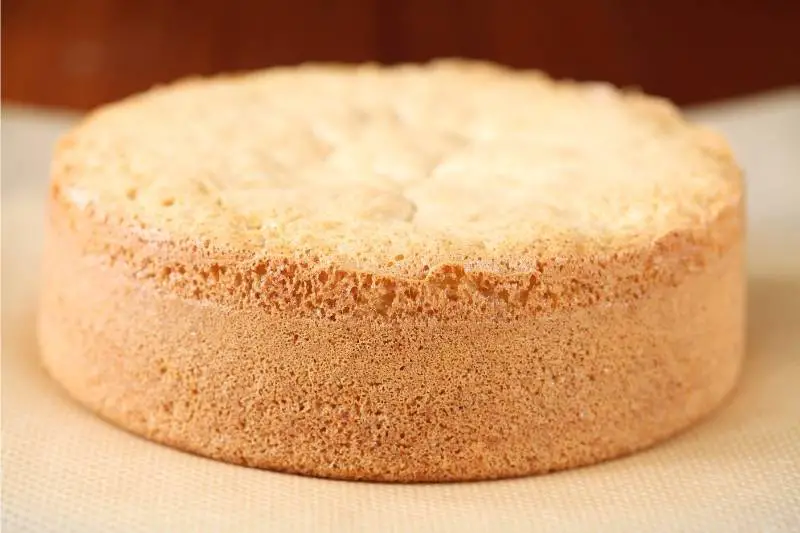
One simple method to use is to microwave it! This is a great shortcut method if you’re planning to serve it right away. Before placing your cake in the microwave, moisten a paper towel and place it lightly on top of your cake. Set it for about ten seconds and check your cake.
If you still need to moisten it then you can rewet your towel and repeat the process again. It shouldn’t take more than three times to moisten your cake with this method.
Many bakers swear by the “bread method” to salvage all kinds of pastries, cakes included! If your cake is dry, gently place it inside a food-safe storage bag and add a slice or two of bread.
Leave it inside for an hour or until the bread feels dry. When the bread feels dry your cake should be moist and ready to serve!
Another unusual method that many bakers use is the “sliced apple method.” While this method uses the same general principles as the bread method, it’s important to note the risk of potential flavor issues. You could use this method with certain types of cakes that work with apple flavors, such as fruit-based cakes or spiced cakes.
*Side Note: You might also want to know Why Your Brownies Crack On Top after baked. I recently wrote an article that talks about How To Prevent and Fix Cracks On Top Of Brownies, you can check it out here!
How to Soften Hard Cake Edges?
An effective way to soften cake edges is to create a simple syrup or glaze to brush over hardened edges. Soak particularly hard parts with more solution in order to create a softer texture. Heat up the cake in the microwave for 10 seconds for the moisture to absorb into the cake edges.
There have been times I thought I had baked a great cake, only to find that the edges around it were hard and dry. While it may be moist in the middle, cakes are all about presentation.
Who wants to serve a cake that’s dry from the first bite?
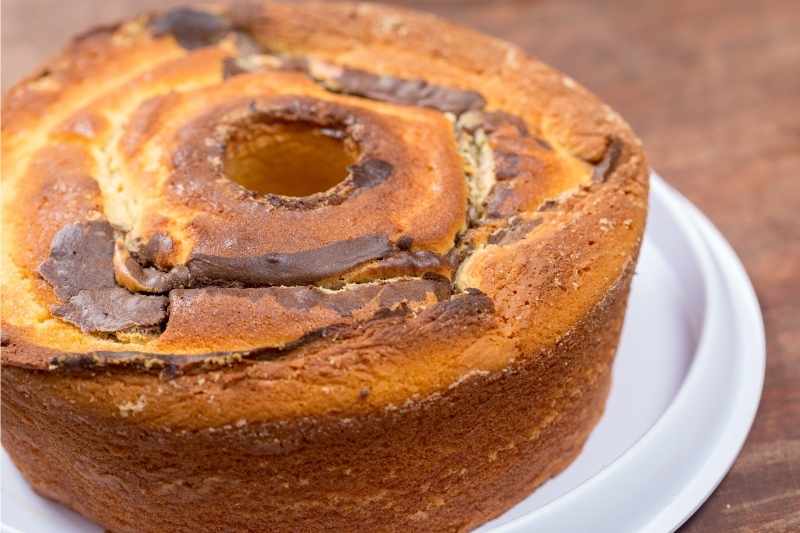
Fortunately, hard cake edges are easily salvageable most of the time using a few quick solutions. Not only are these methods quick and easy, but they’re also very reliable.
The first method you should try is to create a simple syrup concoction of sugar and hot water. Add equal parts water and sugar together in a hot pot and boil it on the stove. Once it has cooled use a brush to lightly whip it all over the dried portions of your cake, paying particular attention to the drier areas.
Allow it to cool, and check your cake again for consistency. It should bring much-needed moisture to those parts and salvage your cake.
How to Prevent a Hard Cake?
There are several different ways to prevent a hard cake: use flour specifically designed for cake, keep an eye on the baking time and temperature, freeze the cake for storage rather than placing it in the fridge, and avoid overmixing the cake batter.
While there are few things as frustrating as a hard cake, there are many simple ways you can prevent this problem from occurring in the first place. The following are a few easy ways to keep your cake from becoming hard and dry.
- Use cake flour instead of regular flour
- Do not overbake the cake
- Do not overmix the cake batter
- Store the cake in the freezer
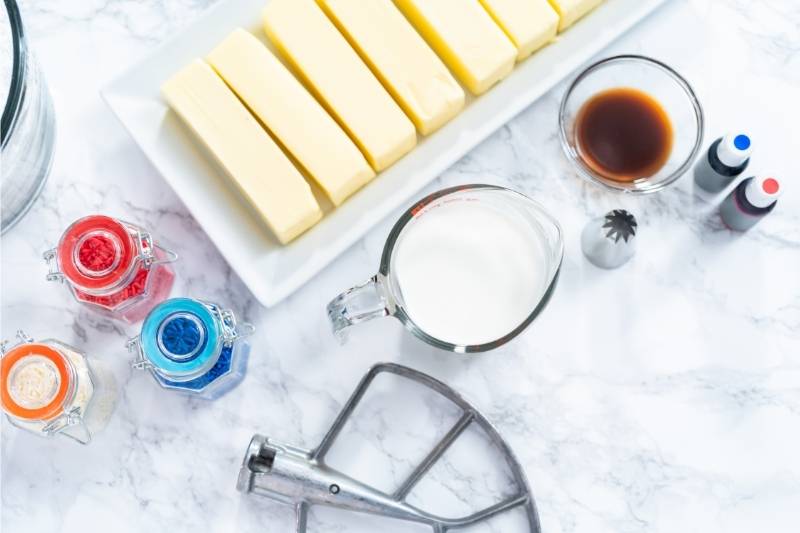
The best tool that I’ve found to sift my flour is a Battery Operated Electric Flour Sifter For Baking. This wonderful tool automates all of my sifting needs in the kitchen! It has a 4-cup capacity and is washable. What else do you need in an automatic sifter? You can check out this Electric Flour Sifter on Amazon!
First of all, use cake flour if at all possible. Not only is cake flour usually pretty easy to find, but it is also specifically created in order to make cakes in the first place. You could also use sour cream in your batter in order to increase the moisture content of your cake as well.
While doubling a recipe may be tempting in order to cut down on time and be more efficient, it’s an easy way to dry out your cakes in the process.
Keep an eye on your timer, and make sure you don’t overbake your cake! When in doubt, pull it out a few minutes early in order to check it.
Overmixing the cake batter will make the flour in the batter start creating too much gluten. When too much gluten is used in batter, it becomes very dense and hard.
Lastly, if you made the cake ahead of time, you should store it in the freezer. Freezing a cooled cake will allow it to maintain its texture while refrigerating the cake will make it dry over time.
*Side Note: You might also want to know how to Store Your Cake Batter The Right Way. I wrote an article about Storing Cake Batter The Right Way, which you can check out here!
How Can I Make My Cake Soft and Spongy?
As a general rule, you can make your cake spongy by whisking room-temperature butter and regular sugar together. Getting ingredients to room temperature will allow them to mix well together. The mixture of butter and sugar will create air bubbles, which are responsible for the sponginess of cakes.
One way to guarantee a cake is soft and spongy, like angel food cake, is to add a bit of baking soda to the batter.
Baking soda can also help make your batter light and prevent it from drying out in the first place.
Before adding your butter to your mixture make sure you give it time to warm up to room temperature. Only after mixing these room temperature ingredients, you can add the rest of the ingredients for the cake batter.
*By the way, you might also want to know How To Mix Batter Without a Mixer. I recently wrote an article talking about The Right Ways of Mixing Batter By Hand, which you can check out here!
How Do I Make My Cake More Moist?
If a cake is dry after baking, there are several methods to moisten it: soak the cake in milk and warm it up in the microwave, brush it with a glaze of syrup, frost it with frosting, or add mousse. Adding ingredients with higher liquid content to the dry cake will allow it to absorb moisture.
Different ways to make your cake more moist:
- Soak the cake in milk and warm it up
- Brush it with a glaze of syrup
- Frost it with frosting
- Add mousse
- Add a layer of fruit on top
Another way you could fix your dried cake is to add a layer of seasonal fruit to add moisture, or you could cover it with buttercream frosting if you don’t have fruit on hand.
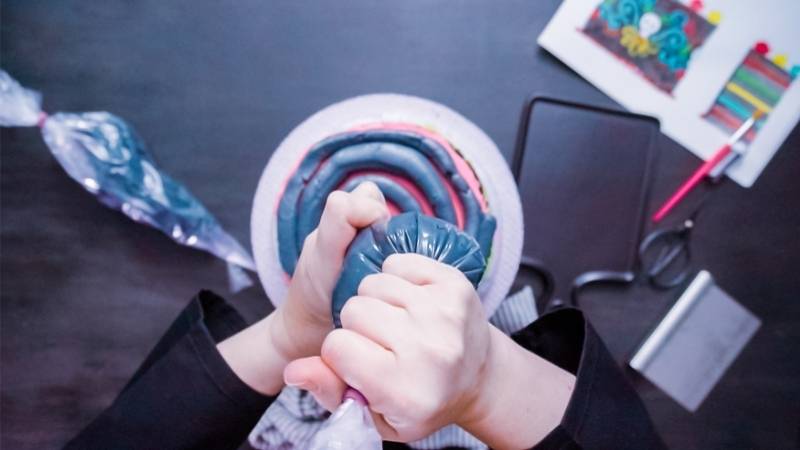
After you fix your cake and you’re done serving it make sure that you store it carefully in order to prevent it from drying out any further.
Exposure to air is your cake’s enemy and will dry it out again, forcing you to repeat the process when you want another piece. An air-tight food-safe storage container is your best bet to help ensure your cake stays moist in the future!
To Summarize…
You often find yourself in a dilemma in your kitchen when it comes to cake. One major reason is that the cake becomes too dry, often because of the excess flour, or the use of egg whites to whisk up the batter can make the batter too tough.
Learning how to soften and moisten a dry cake that gets hard has allowed me to salvage most of my cakes from a point of no return. The most important thing to know is how to bake the cake correctly so that it doesn’t come out dense and hard!

